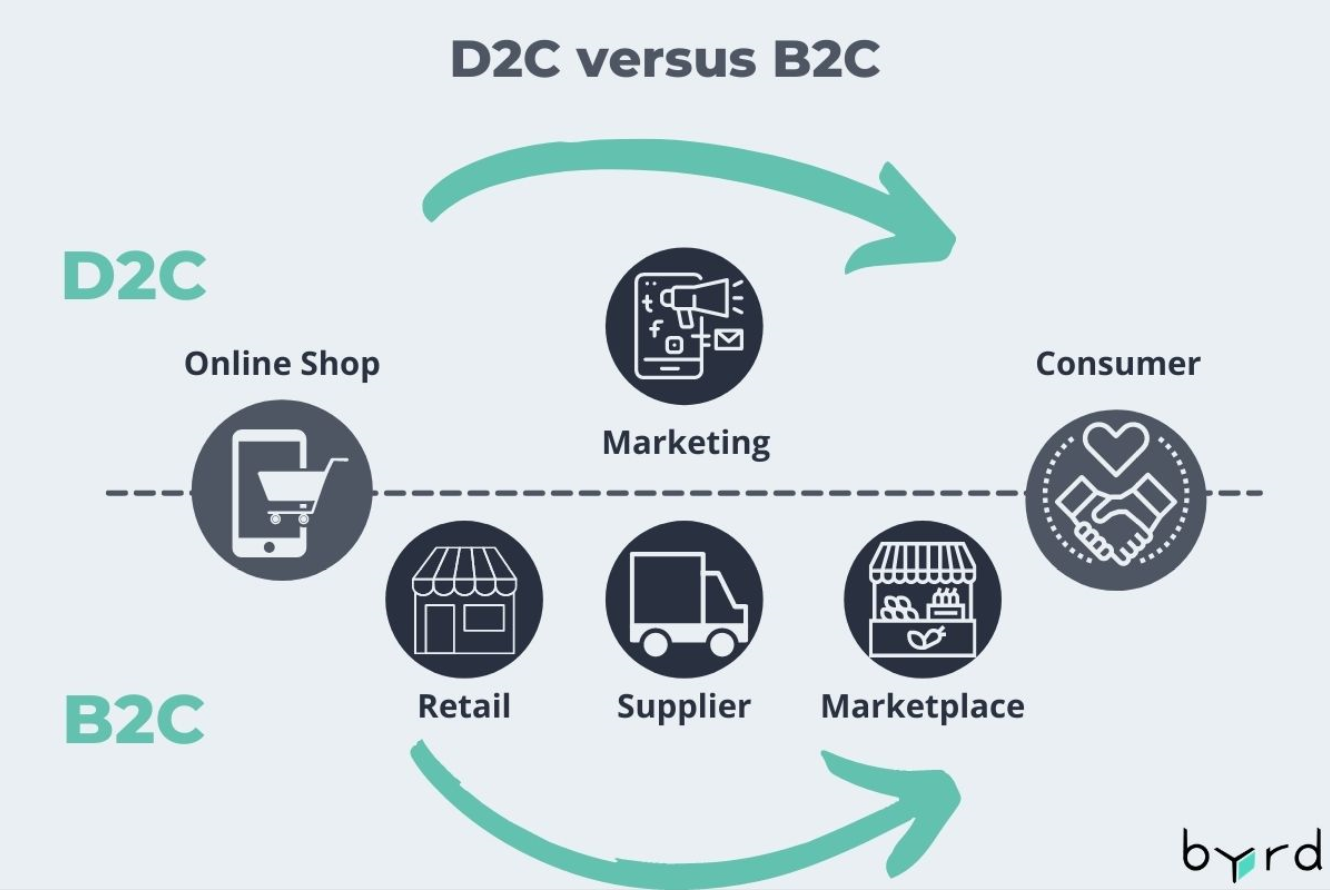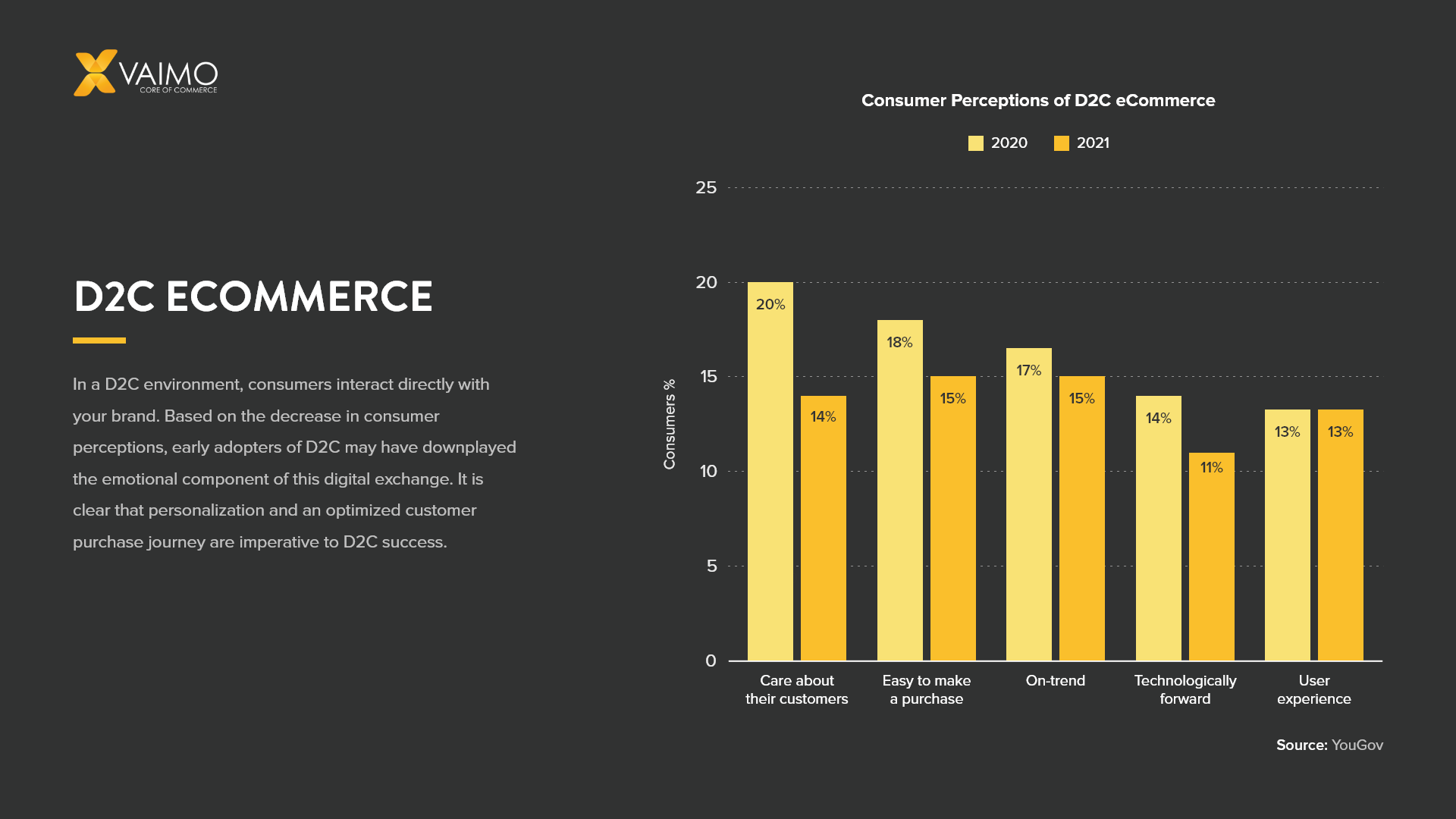How to Launch a Product With Help From a D2C Ecommerce Agency
Exploring the Potential of D2C Ecommerce: A Comprehensive Overview for Companies
The D2C ecommerce model presents a considerable change in exactly how brand names engage with customers. It allows firms to bypass traditional retail networks, promoting deeper connections and potentially raised earnings margins. This approach is not without its intricacies. Understanding the subtleties of D2C ecommerce is necessary for brands intending to prosper. What techniques can they embrace to browse this evolving landscape successfully? The solutions might redefine their organization techniques.
Comprehending the D2C Ecommerce Model

Key Advantages of D2C Ecommerce for Brands
The D2C ecommerce design offers brand names substantial benefits, especially regarding boosted profit margins. By eliminating intermediaries, firms can preserve a larger share of sales income. In addition, this direct relationship with customers cultivates improved brand name loyalty, encouraging repeat purchases and lasting interaction.
Raised Profit Margins

Enhanced Brand Name Loyalty
Building on the financial benefits of D2C ecommerce, enhanced brand loyalty becomes another vital benefit for business involving straight with consumers. By developing a straight connection, brands can promote deeper partnerships with their customers, obtaining insights into choices and behaviors. This straight communication enables more tailored advertising techniques, which resonate strongly with customers. Additionally, brands have the opportunity to control their messaging and customer experience, enhancing brand name worths and building trust fund. When consumers really feel a personal link, they are more probable to return, promote for the brand, and take part in community interaction. Inevitably, enhanced brand loyalty not only drives repeat purchases but additionally grows an enthusiastic customer base, further solidifying a brand's position in the marketplace.
Difficulties Faced by D2C Brands
D2C brands come across a number of substantial obstacles that can impact their success. Supply management issues can result in stock shortages or excess, complicating procedures and consumer complete satisfaction. Additionally, marketing budget restraints commonly limit the ability to properly get to and involve target audiences.
Supply Administration Issues
Reliable stock monitoring presents a powerful obstacle for many brands running in the direct-to-consumer (D2C) area. These brands typically face rising and fall demand, which can lead to overstock or stockouts, eventually influencing consumer fulfillment and profits. Additionally, the lack of sophisticated supply radar can lead to disparities in between actual stock degrees and reported data, complicating order fulfillment. The diverse range of products D2C brands typically use likewise makes complex inventory monitoring, as variants in colors, styles, and dimensions call for more meticulous oversight. Many D2C organizations may have a hard time with limited warehousing capacities, leading to inefficient usage of room and resources. Efficient supply monitoring stays an important obstacle for D2C brand names aiming for sustainable growth and functional efficiency.
Advertising Budget Plan Constraints
Maneuvering marketing spending plan constraints is a substantial obstacle for many direct-to-consumer (D2C) brand names. Minimal economic resources commonly limit these companies' capacity to buy all-encompassing advertising and marketing approaches, resulting in decreased exposure in a competitive market. D2C brands often face the requirement to optimize roi (ROI) while targeting particular target markets effectively. This challenge is worsened by climbing prices in electronic marketing and the requirement to assign funds throughout multiple channels, including social media, internet search engine, and email marketing. Numerous D2C brand names should introduce affordable advertising and marketing services, leveraging natural growth techniques and influencer collaborations. Inevitably, successfully maneuvering these budget plan constraints is essential for sustaining growth and achieving long-lasting earnings in the evolving ecommerce landscape.
Approaches for Constructing an Effective D2C Ecommerce Organization
As customers progressively look for direct links with brand names, developing an effective D2C ecommerce company needs a strategic approach that prioritizes customer engagement and depend on. One effective technique is to produce compelling brand name stories that resonate with target market, cultivating psychological links. Making use of social media platforms can enhance exposure and assist in two-way interaction, permitting brands to engage directly with customers.Moreover, personalized experiences through customized advertising and marketing efforts can substantially improve consumer retention and loyalty. Executing loyalty programs and providing exclusive bargains can better incentivize repeat purchases.Streamlining the purchasing procedure is important, ensuring an user-friendly interface that boosts the shopping experience. Furthermore, transparent communication pertaining to delivery and returns constructs trust fund and motivates consumer confidence.Finally, actively seeking consumer responses and replying to it shows a commitment to improvement and customer advice contentment, important aspects in the competitive D2C landscape.
Leveraging Technology for Improved Consumer Experience
In today's affordable D2C ecommerce landscape, modern technology plays an essential role fit client experiences. Organizations progressively make use of innovative tools such as artificial knowledge, chatbots, and customized algorithms to improve communications and enhance the buying process. By incorporating these innovations, brand names can supply tailored product referrals based on private choices and buying actions, cultivating a more interesting experience.Moreover, receptive internet site designs and mobile applications guarantee that consumers can access solutions perfectly throughout various tools. Enhanced repayment solutions, including electronic wallets and one-click check outs, even more streamline transactions, making it much easier for customers to make purchases.Data analytics also makes it possible for organizations to collect understandings right into customer behavior, permitting continuous renovation of offerings and services. In general, leveraging innovation not just enhances client fulfillment but additionally grows loyalty, ultimately driving lasting success in the D2C ecommerce sector.
Marketing Strategies to Drive D2C Sales
Just how can brand names properly capture the focus of consumers in a saturated market? To grow in the direct-to-consumer (D2C) landscape, brands need to employ targeted advertising strategies. Using social media platforms, brands can involve consumers with interactive web content, influencer collaborations, and user-generated blog posts. Individualized email projects can also promote a sense of connection, providing customized promos based upon consumer behavior and preferences.Moreover, narration plays an important function in separating a brand name's narrative, making it relatable and memorable. Brand names must buy search engine optimization (SEARCH ENGINE OPTIMIZATION) to improve exposure, ensuring their products are conveniently discoverable online. In addition, leveraging information analytics permits services to fine-tune their advertising strategies and recognize consumer trends better. Inevitably, a multi-channel method that combines creative thinking with data-driven understandings can substantially improve D2C sales, enabling brands to attract attention in a jampacked industry.
Future Trends in D2C Ecommerce
With the quick development of modern technology and customer preferences, the future of D2C ecommerce is positioned for significant improvement. Emerging fads suggest a change in the direction of hyper-personalization, where brand names take advantage of information analytics to tailor offerings to private customer needs. This modification boosts customer experiences, promoting commitment and engagement.Moreover, sustainability is becoming a vital factor, with consumers significantly preferring brand names that prioritize eco-friendly methods - D2C Ecommerce Agency. Get More Info Firms are expected to embrace clear supply chains and sustainable products to fulfill this demand.The integration of expert system and augmented truth will furthermore change the purchasing experience, permitting consumers to visualize items in their environments prior to purchase. On top of that, social business is anticipated to grow, as systems like Instagram and TikTok promote smooth purchasing experiences directly within social media.These fads jointly represent a vibrant future for D2C ecommerce, stressing customer-centric approaches and innovative innovations that redefine customer interactions
Regularly Asked Inquiries
What Industries Advantage Most From D2C Ecommerce?
The existing inquiry highlights industries that flourish through direct-to-consumer (D2C) ecommerce. Incredibly, fashion, appeal, electronics, and food markets leverage D2C designs to enhance brand loyalty, improve customer connections, and enhance profit margins successfully.
Just How Do Delivering Expenses Influence D2C Rates Approaches?
Shipping expenses greatly affect D2C prices strategies. Businesses have to stabilize these expenses with competitive rates, thinking about customer assumptions and profit margins. Efficient monitoring of delivery can boost consumer complete satisfaction published here and drive sales in direct-to-consumer models.
What Settlement Choices Should D2C Services Offer?
D2C organizations should offer varied payment choices, including credit/debit cards, electronic purses, and acquire currently, pay later services. This variety improves consumer benefit, increases conversion prices, and accommodates different customer choices in the on the internet purchasing landscape.
Exactly How Can D2C Brands Handle Consumer Returns Successfully?
D2C brand names can deal with client returns properly by implementing easy to use return policies, supplying prepaid shipping tags, and guaranteeing prompt refunds (D2C Ecommerce Agency). Clear communication and structured processes enhance customer contentment and encourage repeat organization
What Legal Considerations Exist for D2C Ecommerce Workflow?
Legal considerations for D2C ecommerce operations include conformity with customer defense legislations, data personal privacy laws, intellectual property legal rights, and tax needs. Brands should navigate these complexities to prevent legal risks and ensure smooth operations. By removing middlemans, D2C brand names can use affordable rates and foster a much more intimate relationship with their customers.The D2C model is defined by its dependence on digital systems, enabling brand names to make use of social media, on the internet markets, and their own websites to involve with customers directly. D2C ecommerce assists in the collection of useful client data, allowing brands to tailor their offerings and marketing strategies effectively, inevitably driving sales and raising margins. In addition, brands have the possibility to regulate their messaging and consumer experience, enhancing brand name values and building trust. As customers progressively seek direct connections with brands, developing a successful D2C ecommerce company calls for a tactical technique that focuses on consumer interaction and trust. D2C brands can take care of client returns successfully by carrying out easy to use return plans, providing prepaid shipping tags, and guaranteeing prompt refunds.